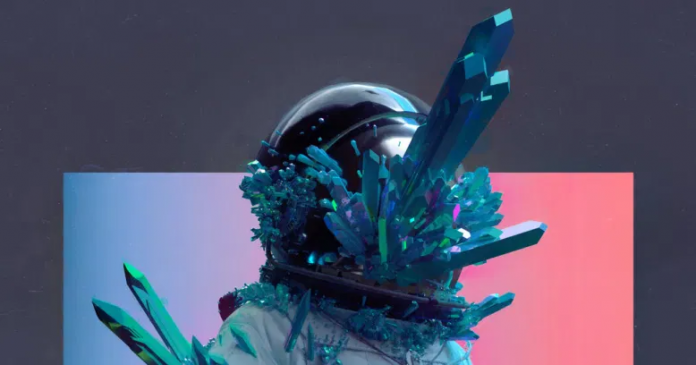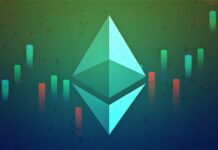By Katia Shabanova
It’s a thrilling time to be alive. Many people are inspired by the crypto market and start to enter it, driven by the possibility of yet unforeseen possibilities. And it’s not just about fast gains. Distributed ledger technology is a unique invention that made it possible to create new movements and reinvigorate many industries. The latest field of application was art, where scarce non-fungible tokens became as valuable as traditional real-world objects. Being an owner of something truly unique and expensive becomes a new kind of hobby that elevates its owner in certain premium clubs and closed communities. Even though the idea that NFTs started with digital art, it spreads and reaches out to other related fields. There are a number of use cases to explore, and enthusiasts actively try to utilize it for environmental, healthcare or social justice projects, for example, like DADA Art Collective using blockchain in support of BLM and police reform, or the late project “Unlock Secrets” by a Ukrainian film director Maria Danke speaking out against violence and abuse against humans. Would the fusion of such things make sense in this case? Definitely.
The new decade’s start was exciting and thrilling in the cryptocurrency field. New all-time-high records for the leading digital asset and altcoins, exciting market events, influencers pumping cryptocurrencies, and NFT hype — the last winter was all but cold in this field. The chance of making easy money sold the idea to engage in the market to a huge number of people who originally were very far from the digital asset market. Most wanted to achieve fast gains – pretty much regarding this just as another opportunity like the crypto casino or lottery. However, the desire to boast of having something exceptional that is inimitable also created a demand for rare non-fungible tokens, which can now be classified as a new class of virtual assets. Being an owner of something unique and expensive becomes a new kind of hobby that elevates its owner in certain premium clubs and closed communities.
Standing out from the crowd
It may seem weird for a newcomer, but NFT tokens do not represent something fundamentally new. It’s rather the victorious comeback of a not-so-successful experiment, reinvented. Going back in history, we can remember that in 2017, CryptoKitties or “digital cats” made the headlines, each having a unique color, bizarre shape of eyes and ears. The most expensive “cat” with a unique “genotype” was sold at auction for $155,000. Smart users managed to earn real money with this initiative and even managed to overload the still low-throughput Ethereum blockchain, as a high volume of transactions led to a sharp increase in fees within the network.
However, some people are still unable to clearly designate the difference between thousands of existing cryptocurrencies and NFT tokens. The latest class of NFTs represents highly rare and expensive items like elite jewelry, collectible old coins, or other, different yet expensive real-world physical items — meaning they are unique in their kind. Such tokens are purchased through online platforms and then paid in USD or cryptocurrency, with costs ranging from a few dollars to millions when it comes to art houses.
NFT tokens can also be compared to baseball cards, which are also unique and popular among sports fans. Collectors are willing to spend incredible amounts buying these items at auctions. In 2007, one of these cards with the image of the American baseball player Honus Wagner, printed in 1909 in the amount of 57 copies, was sold on eBay for an incredible $ 2.8 million.
The trend has not changed much since then, but there is much more hype around this topic. New NFT projects and marketplaces are appearing ever more often, and are gaining ever more popularity. Even popular auction house Sotheby’s now supports this initiative, as the first NFT sale with digital creator Pak amounted to a staggering $17 million!
Earlier, the British auction house Christie’s launched a one-lot sale of the digital artwork called “Everydays: The First 5000 Days” by American artist Mike Winkelmann, also known as Beeple. The piece was eventually sold on March 11, 2021, for the astonishing price of $69.3 million.
Exploring the risk area
The NFT’s uniqueness is also achieved by utilizing the ERC-721 standard. Compared to the conventional ERC-20 fungible token types, the NFT token cannot be counterfeited, replaced, or broken into pieces, representing its ultimate value as a whole asset.
Regardless of the technical details, NFT can be used to prove ownership of an object. And thanks to the tokenization of real assets, NFTs can reflect the fact of their ownership. Such an object or asset can be an image, real estate, music, any digital artwork, game item, or character. Once digital files are uploaded as non-fungible tokens on blockchains, they can be offered for sale, since it would always be possible to distinguish the original file from its copies shared online.
It is already common in the media to see headlines about the sale of NFT tokens for millions and tens of millions of dollars. Jack Dorsey’s tweet was sold for nearly $3 million, and as disclosed above, Beeple’s NFT painting amounted to a record $69 million!
As for the risks, many remember well the fate of most ICO tokens, which lost most of their value, with over 80% of ICO token projects turning out to be scams. NFT could repeat the history of ICOs if the industry really overheats in late 2021. It is also not clear how museums and art galleries plan to include NFT tokens if many of the visitors are still highly conservative, as they will raise the question of how to return NFT art in case of theft or loss, to which unfortunately there is no answer at the moment.
Are NFTs worth investing in?
In case the interest from high net worth individuals, media personalities and notable
influencers increase, we will surely witness even more growth in the NFT sector and new record-breaking gains. Expert Dan Kelly, president of Nonfungible.com, compares this to owning a single Mona Lisa original and reprints per painting. That being said, even if thousands of NFTs are sold with digital images that look the same, the underlying information due to the blockchain technology will be different.
These markets are highly speculative — just like cryptocurrencies. Extensive tools for monitoring trends are still being developed. So far, users and buyers do not have ample opportunity to assess the value of an asset or to find out if there is sufficient liquidity to realize their earning potential.
Why do people want to obtain such items so badly? This certain twist of human psychology can be explained by the ownership of luxury items such as Swiss Rolex watches, which the wealthy buy almost exclusively to emphasize their high social status and belonging to a specific inner circle.
But how can this be outlined in the digital world? Posting the purchased digital artwork as an avatar, for example, on Twitter is the most obvious way. Everyone using the blockchain will be able to check whether it really belongs to the account owner.
NFT tokens are coming close in their definition to a Maybach, Bugatti, or Patek Philippe kind of thing: a highly prestigious asset that opens the way to some opportunities and privileges that are closed to most of the population. The people that enjoy possessing these assets are entering the society of the chosen.
Some wonder if the NFT industry is close to its dawn, and both where and when the downfall will start. However, art remains art despite an NFTs all-digital nature. There has always been an increased demand for something new and flashy. NFTs still belong to a maturing market, and the history of digital art is just beginning.
Some wonder if the NFT industry is close to its dawn and where the downfall will start. There has always been an increased demand for something new and flashy. NFTs still belong to a maturing market, and the history of this field is just starting.
Undoubtedly, this niche is highly speculative and even more risky than the crypto market. If you have no experience with digital assets, it is best to make sure that you are not spending more than you are willing to lose, but for those with the means, NFTs are the new technology in the crown, and are the new must-have digital item of the early 21st century.
NFTs are the new fun thing for some to collect, but they could also be the next failed trend, so proceed with caution.
Credit: Source link






















 Bitcoin
Bitcoin  Ethereum
Ethereum  Tether
Tether  Solana
Solana  USDC
USDC  Lido Staked Ether
Lido Staked Ether  XRP
XRP  Dogecoin
Dogecoin  Toncoin
Toncoin  Cardano
Cardano  Shiba Inu
Shiba Inu  Avalanche
Avalanche  TRON
TRON  Wrapped Bitcoin
Wrapped Bitcoin  Bitcoin Cash
Bitcoin Cash  Polkadot
Polkadot  Chainlink
Chainlink  NEAR Protocol
NEAR Protocol  Polygon
Polygon  Litecoin
Litecoin  Internet Computer
Internet Computer  Uniswap
Uniswap  LEO Token
LEO Token  Dai
Dai  First Digital USD
First Digital USD  Ethereum Classic
Ethereum Classic  Hedera
Hedera  Aptos
Aptos  Stacks
Stacks  Mantle
Mantle  Cronos
Cronos  Stellar
Stellar  Cosmos Hub
Cosmos Hub  Filecoin
Filecoin  OKB
OKB  Render
Render  Immutable
Immutable  Renzo Restaked ETH
Renzo Restaked ETH  XT.com
XT.com  Pepe
Pepe  Bittensor
Bittensor  Arbitrum
Arbitrum  dogwifhat
dogwifhat  Maker
Maker  Wrapped eETH
Wrapped eETH  The Graph
The Graph  Optimism
Optimism 
